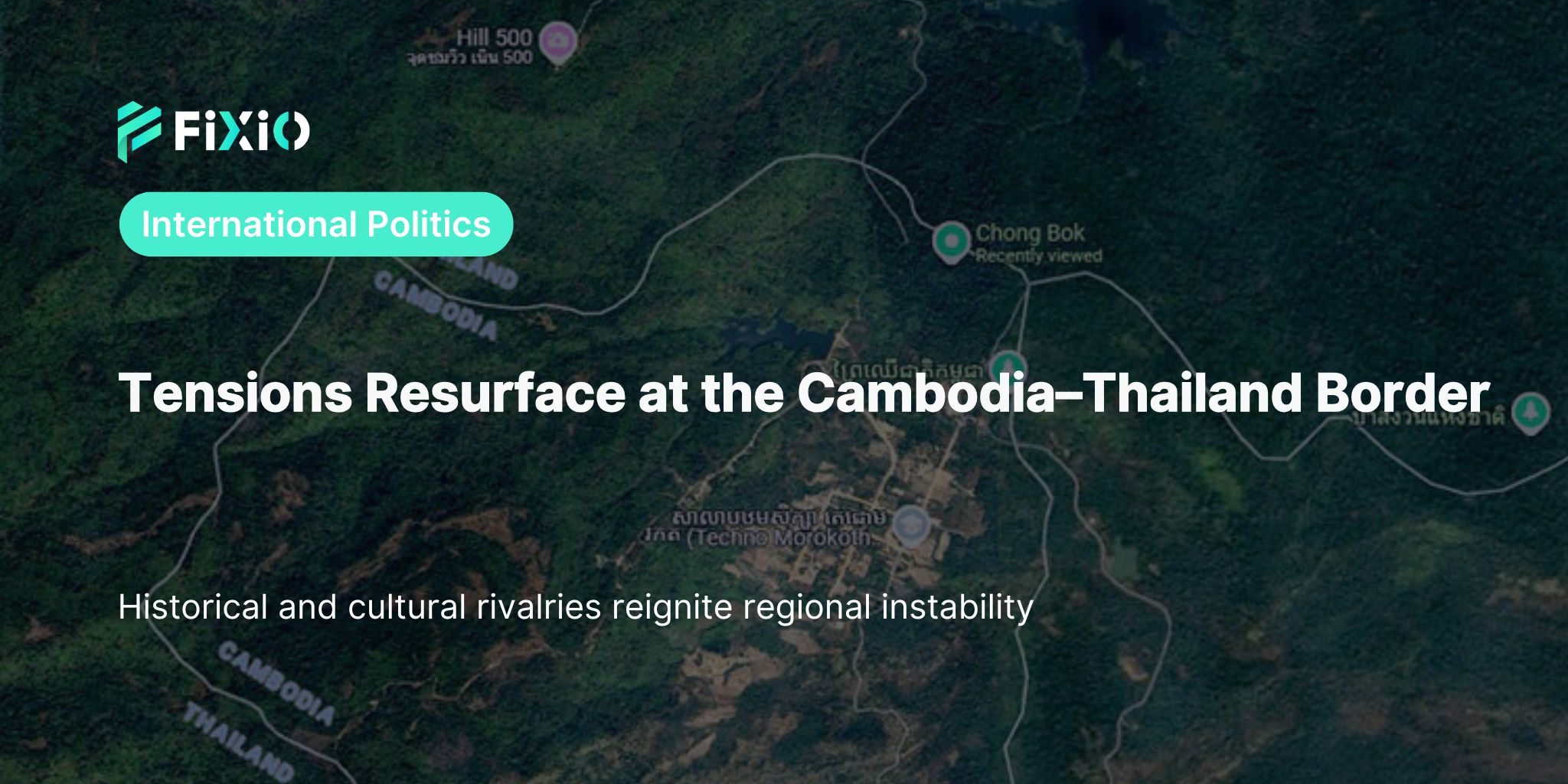
The strained relationship between Cambodia and Thailand is not new—it is deeply rooted in a territorial conflict that dates back to the French Indochina era. A map drawn in 1907 during colonial rule has been the basis for Cambodia's territorial claims, while Thailand continues to reject its accuracy.
The two countries share over 800 kilometers of land border, much of which runs through undeveloped or forested areas that remain poorly demarcated internationally.
In May 2025, troops from both nations exchanged gunfire in a disputed “no man’s land,” resulting in the death of one Cambodian soldier. While the incident was quickly contained, it escalated military posturing on both sides.
In response, approximately 50,000 Cambodian citizens held a mass demonstration in the capital, Phnom Penh, to show support for the government and armed forces. Nationalist sentiment surged across the country.
The Thai government has implemented stricter border controls, banned entry of casino tourists and migrant workers from Cambodia, and halted certain exports. Cambodia has retaliated by banning Thai television programs and movies, stopping imports of Thai fruits and vegetables, and cutting infrastructure connections.
Although these actions have not led to open conflict, economic sanctions and cultural boycotts have stirred public sentiment in both nations.
A major flashpoint remains the sovereignty over the Preah Vihear Temple. In 1962, the International Court of Justice (ICJ) ruled in favor of Cambodia. However, this decision has long been contested within Thailand.
In 2011, further clashes occurred near the site, resulting in over 20 deaths and the evacuation of thousands. Cambodia brought the case back to the ICJ, which reaffirmed the ruling in 2013, though discontent within Thailand persists.
The conflict is fueled not only by boundary lines but also by deep-rooted nationalism and cultural rivalry. Historically, both nations were rival empires, and Cambodia's development was severely delayed by the Khmer Rouge regime and colonial legacies, intensifying perceptions of imbalance with Thailand.
The two nations have long contested rights over cultural heritage—including dance, cuisine, martial arts, and traditional attire—further aggravating tensions in the region.
Cambodia has stated its intent to continue seeking resolution through the ICJ. In contrast, Thailand insists that existing bilateral mechanisms, including a joint boundary commission established in 2000, should remain the platform for addressing the dispute.
This divergence in legal and diplomatic approaches means that regional tensions are likely to persist in the near future.
This is not simply a short-lived border clash. The crisis intertwines history, culture, economics, and sovereignty. It also threatens broader regional stability across Southeast Asia, making the role of ASEAN and the United Nations increasingly vital.
Effective geopolitical risk management and calm, law-based dialogue will be essential to achieving a long-term solution.
For more updates and analysis on international conflict and regional dynamics, visit the FIXIO Blog below.
Tensions are rising again at the Cambodia–Thailand border. Historical and cultural rivalries between the two countries lie at the heart of the current conflict.
Superior trade execution & trading conditions with the NDD method.

The online FX industry provides a platform for investors worldwide to engage in the buying and selling.

Subscribe to our daily newsletter and get the best forex trading information and markets status updates
Trade within minutes!
Comment (0)